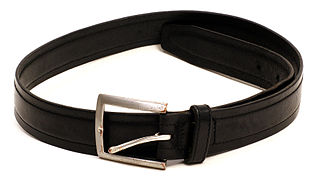A highway patrol is either a police unit created primarily for the purpose of overseeing and enforcing traffic safety compliance on roads and highways, or a detail within an existing local or regional police agency that is primarily concerned with such duties. They are also referred to in many countries as traffic police, although in other countries this term is more commonly used to refer to foot officers on point duty who control traffic at junctions.

The Special Task Force (STF) is an elite para-military forces unit of the Sri Lanka Police specializing in counter-terrorism and counter-insurgency operations. It was formed in 1983 not as a military force, but rather as a highly specialised police unit.
The NYPD Transportation Bureau is one of the ten bureaus that comprise the New York City Police Department and is currently headed by Bureau Chief Thomas M. Chan
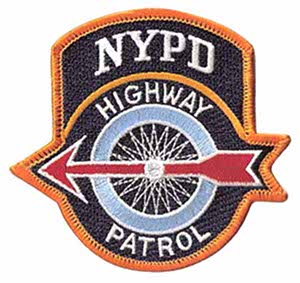
The New York City Police Department Highway Patrol, also known as the NYPD Highway Patrol or by the shorthand NYPD HWY, is a specialized unit under the auspices of the NYPD's Transportation Bureau primarily responsible for patrolling and maintaining traffic safety on limited-access highways within New York City. The NYPD Highway Patrol's other duties and roles include accident investigations, advanced driver and radar training for NYPD officers, field sobriety testing, dignitary and parade escorts, hazardous material and truck traffic enforcement, anti-drag racing programs, and anti-terrorist checkpoints at key bridges and intersections in the city.

The Philadelphia Highway Patrol is a specialized unit within the Philadelphia Police Department that shares a dual role as both the primary enforcers of traffic laws within the city and as a unique anti-crime task force.

The Ministry of Transportation of Ontario (MTO) is the provincial ministry of the Government of Ontario that is responsible for transport infrastructure and related law in Ontario. The ministry traces its roots back over a century to the 1890s, when the province began training Provincial Road Building Instructors. In 1916, the Department of Public Highways of Ontario (DPHO) was formed and tasked with establishing a network of provincial highways. The first was designated in 1918, and by the summer of 1925, sixteen highways were numbered. In the mid-1920s, a new Department of Northern Development (DND) was created to manage infrastructure improvements in northern Ontario; it merged with the Department of Highways of Ontario (DHO) on April 1, 1937. In 1971, the Department of Highways took on responsibility for Communications and in 1972 was reorganized as the Ministry of Transportation and Communications (MTC), which then became the Ministry of Transportation in 1987.
The National Traffic and Motor Vehicle Safety Act was enacted in the United States in 1966 to empower the federal government to set and administer new safety standards for motor vehicles and road traffic safety. The Act was the first law to establish mandatory federal safety standards for motor vehicles. The Act created the National Highway Safety Bureau. The Act was one of a few initiatives by the government in response to a increasing number of cars and associated fatalities and injuries on the road following a period when the number of people killed on the road had increased 6-fold and the number of vehicles was up 11-fold since 1925.

Traffic police or traffic officers, often referred to colloquially as traffic cops, are police officers who direct traffic or serve in a traffic or roads policing unit enforcing rules of the road. Traffic police include officers who patrol major roads and also police who address traffic infractions on other roads. It has been noted that:
...traffic police, who are regarded as peripheral to most police forces, participate in both authoritative intervention and symbolic justice. Perhaps alone of all the assignments, traffic police are full-service police. They are different from the rest, however, because their work is limited to a particular venue — namely, public thoroughfares — and to particular people — namely, those who operate motor vehicles. But in terms of work, traffic police are detectives as well as patrol officers.
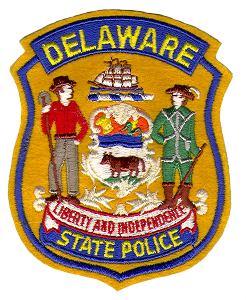
The Delaware State Police (DSP) is a division of the Delaware Department of Public Safety and Homeland Security and is responsible for traffic regulation and law enforcement across the state of Delaware, especially in areas underserved by local police departments. The DSP is headquartered in the capital Dover, Delaware.
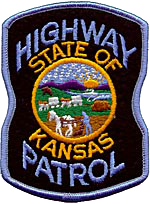
The Kansas Highway Patrol (KHP) is a law-enforcement agency that serves the state of Kansas. While the patrol's primary focus is maintaining the safety of State, Federal and Interstate highways, it also is charged with providing support for rural and small municipal police departments when tactical, aerial or other specialized services are needed. The Kansas Highway Patrol has statewide jurisdiction, and frequently assists other agencies with emergency calls for service ranging from accidents to fights in progress.

The Florida Highway Patrol (FHP) is a division of the Florida Department of Highway Safety and Motor Vehicles and the primary law enforcement agency charged with investigating traffic crashes and criminal laws on the state’s highways.
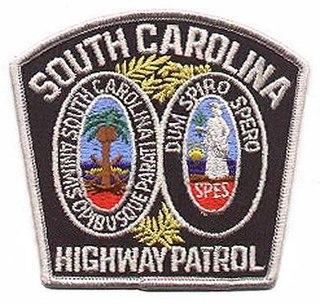
The South Carolina Highway Patrol is the highway patrol agency for South Carolina, which has jurisdiction anywhere in the state except for federal or military installations. The Highway Patrol was created in 1930 and is an organization with a rank structure similar to the armed forces. The mission of the South Carolina Highway Patrol includes enforcing the rules and regulations in order to ensure road way safety and reducing crime as outlined by South Carolina law. The Highway Patrol is the largest division of the South Carolina Department of Public Safety and its headquarters is located in Blythewood. This department also includes the South Carolina State Transport Police Division, and the South Carolina Bureau of Protective Services.

The Colorado State Patrol(CSP), based in Lakewood, Colorado, is a division of the Colorado Department of Public Safety, and is one of the official state police agencies of Colorado, along with the Colorado Bureau of Investigation and several smaller state agencies. The CSP primarily enforces traffic laws on interstates and state highways, guards the state capitol and the Governor of Colorado.
Law enforcement in Sri Lanka falls under the jurisdiction of the Sri Lanka Police, the national law enforcement agency.

'Kadawatha' is a suburb of Colombo city, situated on the A1 highway from Colombo to Kandy, in Sri Lanka. The distance to Colombo, the commercial capital of Sri Lanka, is about 16 km from Kadawatha. Rubber, Soft drinks, Industrial machines, Diesel motor houses, Strategic Investments & Leisure destinations are some of the industries established there. Kadawatha is a collection of many ruralities. Ganemulla,Mahara, Kirillawala, Rammuthugala, Dalupitiya, Karagahamuna, Biyanwila and Kirimatiyagaraya are some of them.
The Inspector General of Police (IGP) is the professional head of the Sri Lanka Police. He is the most senior police officer in Sri Lanka and oversees all police personnel throughout the country. The IGP reports to the Minister of Law and Order, when the Police Service is under the Ministry of Law and Order as it is currently. The current Inspector General of Police is Pujith Jayasundara, who succeeded N.K. Illangakoon.
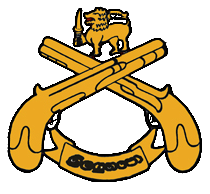
The Sri Lanka Corps of Military Police (SLCMP) is the branch of the Sri Lanka Army responsible for the policing of service personnel and providing a military police presence on service property, operations and exercises. It is made up of three regular regiments and with headquartered at Regiment Center Polhengoda, Colombo. Like other military police around the world, they continue to wear white webbing with barrack dress but white gaiters.
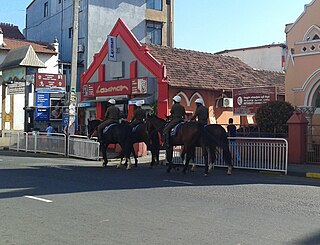
The Sri Lanka Police Mounted Division is the mounted division the Sri Lanka Police. The responsibility of the division is to conduct safe policing of crowd control at large public order events and provide ceremonial escorts. The police mounted division is under purview of the DIG - Colombo Range and control of by a SSP - Mounted Division and has a strengths of two Inspectors, four Sub-Inspectors, 10 sergeants, 34 constables with 60 horses.
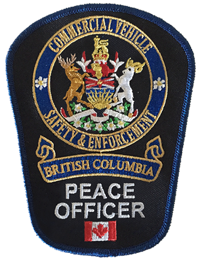
British Columbia Commercial Vehicle Safety & Enforcement (BCCVSE) is a provincial law enforcement agency that is responsible for the compliance and enforcement of the commercial transport sector, protection of the environment and transportation infrastructure of British Columbia, increasing road safety and protecting the motoring public.






